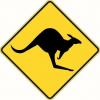Hi All,
Kind of a small question here. I'm making a small charcuterie board (around 10" by 5.5" and 3/4" thick). It's flat but still has some plane marks from the lumber yard. Would you sand these out or use a #4 hand plane?
For the record, I've only started using hand planes last week but all I've done is remove high spots off a longer board. Researching online suggests I could do either way so I was thinking of trying the #4 plane and if I screw it up then I sand it down! Let me know what you think!




 Reply With Quote
Reply With Quote






